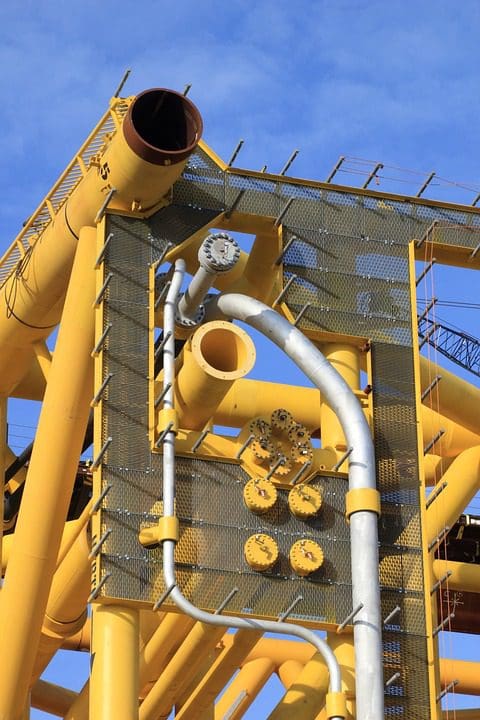The BP Deepwater Horizon disaster changed lives forever, and while the families of those who perished will always feel the loss, some lessons were learned in the aftermath. The Bureau of Safety and Environmental Enforcement, commonly known in the offshore oil and gas industry as BSEE, adopted the 30 CFR Part 250.1900 standard. Referred to as SEMS, the Safety and Environmental Management System serves as a tool in managing business operations offshore.
SEMS zeros in on seventeen different elements that provide a guideline for conducting operations safely and in a responsible manner. A central focal point of the SEMS program finds roots in mechanical integrity programs. Under the SEMS regulation, operators must establish and implement written procedures for any work they conduct. The systems must include instructions to ensure that the equipment’s mechanical integrity and safe operation are communicated to the workforce. Inspecting, testing, and quality assurance are all tools utilized to gain and maintain the mechanical integrity element.
Inspections
Exercising initiative-taking behavior produces positive results in the workplace. Establishing a robust inspection system or criteria can effectively identify compromising equipment before a defect results in an incident or injury.
In various situations offshore, vacuum dehydrators are used to remove moisture from fluids. According to the SEMS standard, a vacuum dehydrator brought to a deep-water platform must undergo a rigorous inspection process. It is worth considering the ramifications of not being used correctly under the regulation. A leaking hose can spur hydraulic fluid onto the platform floor and even into the water resulting in significant environmental damage. With the same equipment, a hose connected to the equipment heater could burst due to wear and tear and spray hot hydraulic fluid across the operator, leaving him significantly burned. An incident or injury resulted in each case and could have been avoided through a detailed inspection process.
Equipment inspections can not only protect the workforce and the environment, but they can additionally prolong its lifespan. By identifying components needing repair, or incorrect performance, the equipment can be removed from service and receive the attention required. This can halt any further damage from occurring. As a bonus, removing the equipment from service to decrease additional damage also protects the workforce and environment from potential harm.
Inspections should be conducted as per the recommendations of the manufacturer at a minimum. Companies may increase inspection to surpass the minimum standard if they feel it will provide adequate benefit. A good rule of thumb is to always conduct a pre-use inspection of equipment before introducing it into service. This is a practical approach in identifying any potential damage incurred during shipping or when moved in and out of storage.
Testing
Conducting operational testing on equipment should be part of the inspection criteria associated with a piece of equipment. This produces a plethora of valuable and vital results that can benefit both the equipment itself and the operator using it.
Testing the equipment serves as an ideal method in discovering faulty performance. When testing a pump to find out, it will not achieve a suction, learning this at its facility yields minor discomfort and attention instead of an offshore platform. That piece of equipment would need to be sent shoreside, thereby engulfing resources and finances unnecessarily. By testing the equipment where it is housed, resources and time can be salvaged. A replacement can be sent out without having to later conduct an exchange.
The testing procedure also serves to ensure the operator understands how to manage the equipment from start to finish. Gaps in understanding emergency shutdown procedures can be identified and educated before it occurs in the field. Failing to effectively shut down equipment in an emergency can lead to incidents and injury.
Quality Assurance
While regulations increase to enhance safety and environmental responsibility offshore, companies are bolstering their business methods to meet these mandated stipulations. Along with achieving compliance, companies find motivation in their desire to provide for that safe workplace experience.
Companies are establishing quality assurance programs to meet regulations, but they have become a requirement by the large deep-water operators to ensure complete compliance. That service company that provides high-velocity lube oil flushing offshore may wish to enact a quality assurance program to ensure adequate products and services. Still, the operators who hire them are requiring them anyway.
The fact that both the service side and the operators themselves recognize the importance of quality assurance programs speaks volumes to their impact in the workplace. Companies that exercise quality assurance programs can manage inspection and testing procedures to ensure that their equipment is in the best working order possible before leaving the yard. Making needed repairs before shipment can save lives in the future and better utilize time and resources in completing those offshore tasks effectively.
Nick Vaccaro is a freelance writer and photographer. In addition to providing technical writing services, he is an HSE consultant in the oil and gas industry with twelve years of experience. Vaccaro also contributes to SHALE Oil and Gas Business Magazine, American Oil and Gas Investor, Oil and Gas Investor, Energies Magazine and Louisiana Sportsman Magazine. He has a BA in photojournalism from Loyola University and resides in the New Orleans area. Vaccaro can be reached at 985-966-0957 or nav@vaccarogroupllc.com.






